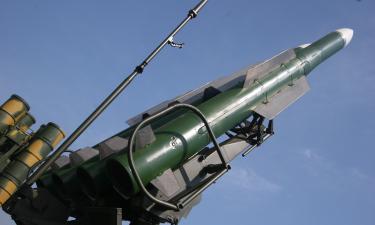Anniversary of the Country, Which Doesn’t Exist
The USSR was formed on December 30, 1922
“The people of Soviet republics unanimously decided to establish the Union of Soviet Socialist Republics. This decision is a reliable fact to prove that the USSR is the state that was formed on a voluntary basis. Each republic of this state possesses a right to pull out from the Union. The access to the Union is open to all Soviet socialist republics, for those that exist now and will probably appear in the future. The new unified state is a worthy completion of the efforts that were started in October of 1917. The USSR will serve a reliable stronghold against the wold capitalism, it will be a new resolute step on the way for the workers of all countries to unite in the joint Soviet Socialist Republic.”
This is an excerpt from the Declaration about the establishment of the Union of Soviet Socialist Republics, which was approved by the First Soviet Congress on December 30th, 1922.
Several large state institutions were established after the break-up of the Russian empire. However, it would not be correct to say that they were state institutions, since this notion does not make any sense against the background of World War One and the civil war. Some of those institutions – Poland and Finland – became independent ones. The Russian Empire’s successor was the Russian Soviet Federative Socialist Republic (RSFSR). National autonomies like Tatarstan or Uzbekistan started their formation in the spring of 1918. The political system of those republic were similar to the one of the center. Yet, newly-established autonomies had to conclude agreements with the center, pursuant to which republican governments were not supposed to subordinate to the adequate bodies of the RSFSR. The Russian Federation maintained allied relations with Ukraine, Belarus and the Caucasian Federation (it consisted of Armenia, Azerbaijan, Georgia in 1921-1922). Other republics had to conclude international agreements separately. This was not really logic, since their political structure was basically the same as of the Russian Federation. Furthermore, Moscow often had to play the role of a lobbyist: foreign negotiators could never get used to the idea that other republics were actually the same countries as the RSFSR.
Another important prerequisite for the establishment of the USSR was the retrieval of economic links between the new republics. No republic was able to overcome the grave consequences of the civil war alone. There were originally two ways considered to set up a new state. One of them was a process of establishing autonomies. People’s commissar for national affairs, Joseph Stalin, was standing up for this way. Pursuant to this variant, all republics were supposed to be included in the structure of the RSFSR on an autonomy basis. Yet, Vladimir Lenin believed that a federation would be a better variant to use. A federation is a union of national state institutions, which exists at the moment. Lenin’s variant became the final one, as a result of long and vivid debate. However, as experience showed, it was Joseph Stalin’s variant that was actually developing: the administration of national republics was virtually dismissed from any decision-making processes.
There were (and there will be) a lot of discussions to find out, which form of the state organization was more viable. Yet, it is evident that Stalin’s model was more efficient against the background of such large-scale reforms like collectivization or industrialization. On the other hand, it is not quite correct to evaluate its efficiency, since Lenin’s alternative was never realized.
Anyway, the fact that the Union of Soviet Socialist Republics was established, did not mean that there was a new powerful state in the world. There was a strong need to realize the potential of this state. The ground for its realization was laid during the period of the 1920s-1930s. This was the reason why the Soviet Union won the war with fascist Germany and became a superpower at the end of the 1940s. The question of the price of this status is a subject for another story.
The establishment of the Soviet Union was not an incidental thing to happen. The unification process between the republics was a natural process. First of all, the political regimes in those republics were all identical to each other; they all had the same ideology. Secondly, this unification was absolutely logic both from the foreign political and from the economic point of view. Finally, bolsheviks could not cast away the centuries-old experience of governing the country, no matter what attitude they might have towards Tsarist Russia. The USSR’s existence was rather a short period in terms of history – only 69 years. Nevertheless, we are still unable to evaluate the real scale of its inheritance.
Vasily Bubnov PRAVDA.Ru
Translated by Dmitry Sudakov
Subscribe to Pravda.Ru Telegram channel, Facebook, RSS!





